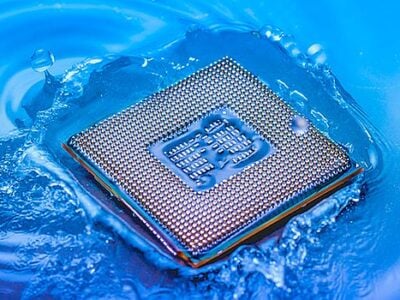
US tightens restrictions on Huawei’s chip supply
The globalized nature of chip manufacturing and the ubiquity of US EDA software and manufacturing equipment means that the US is effectively taking control of Huawei’s chip supply. The intention is to prevent Huawei’s progess for reasons of national security the Department of Commerce said.
The move clearly runs the risk of provoking a damaging round of escalation and retaliation in a trade war between the US and China.
The statement from the Bureau of Industry and Security (BIS) specifically mentioned Huawei and said that Huawei had been trying to undermine US export controls by using external foundries to make its chips. The BIS added Huawei and 114 overseas affiliate companies to the so-called “entity list” in May 2019 and said that Huawei has continued to use U.S. software and technology to design and make semiconductors.
The Chinese authorities responded by threatening to ban US companies such as Apple, Qualcomm and Cisco.
“Despite the Entity List actions the Department took last year, Huawei and its foreign affiliates have stepped-up efforts to undermine these national security-based restrictions through an indigenization effort. However, that effort is still dependent on U.S. technologies,” said Secretary of Commerce Wilbur Ross, in a statement. “This is not how a responsible global corporate citizen behaves. We must amend our rules exploited by Huawei and HiSilicon and prevent U.S. technologies from enabling malign activities contrary to U.S. national security and foreign policy interests.”
Next: Tears before bedtime
The possibility of rule changes had been floated before (see US reconsiders restricting China’s chip supply). At that time it was thought that these rule changes would be generic although it was widely supposed the intended target was Huawei, which has grown to become the world’s largest telecommunications equipment company and the leader in 5G communications. The US has banned the purchase of Huawei equipment on the grounds that it could be used for spying in users by the Chinese state. The US has also pressed other countries to take the same position. Huawei has always denied it could would act in such a manner.
The BIS said that it would make semiconductor designs when produced by Huawei and its subsidiary HiSilicon, subject to Export Administration Regulations. These items will require a license from the United States if they are to be exported to or transferred to Huawei or any of its affiliates. The BIS said that the condition would only apply to wafer starts as of May 15, 2020. Suppliers have 120-day grace period to complete and ship work-in-progress.
Huawei said the move by the US was totally unjustified and that despite being put on the entity list a year ago had continued to comply with all the regulations. It would now do everything it could to find a solution to the latest restrictions but that the move would inevitably hit its business.
The change is likely to have the biggest impact on Taiwan Semiconductor Manufacturing Co. Ltd. (Hsinchu, Taiwan). Huawei was responsible for about 14 percent of TSMC’s sales in 2019 and China as a whole about 20 percent (see HiSilicon breaks into top ten chip vendor ranking).
However, TSMC is expected to comply fully with the enhanced US restrictions and indeed on the same day that they were announced, announced its own plans to build a wafer fab in Arizona, thereby further helping US foreign policy aims.
Related links and articles:
US reconsiders restricting China’s chip supply
US considers taking control of global chip exports
Semiconductor industry pushes back against US export controls
ST deal won’t shield Huawei, but could help
Huawei stockpiling chips, expecting tighter US sanctions
Analysis: TSMC ponders US wafer fab while awaiting trade rule changes
US talks to Intel, TSMC about building local foundry fabs
HiSilicon breaks into top ten chip vendor ranking
 If you enjoyed this article, you will like the following ones: don't miss them by subscribing to :
eeNews on Google News
If you enjoyed this article, you will like the following ones: don't miss them by subscribing to :
eeNews on Google News




